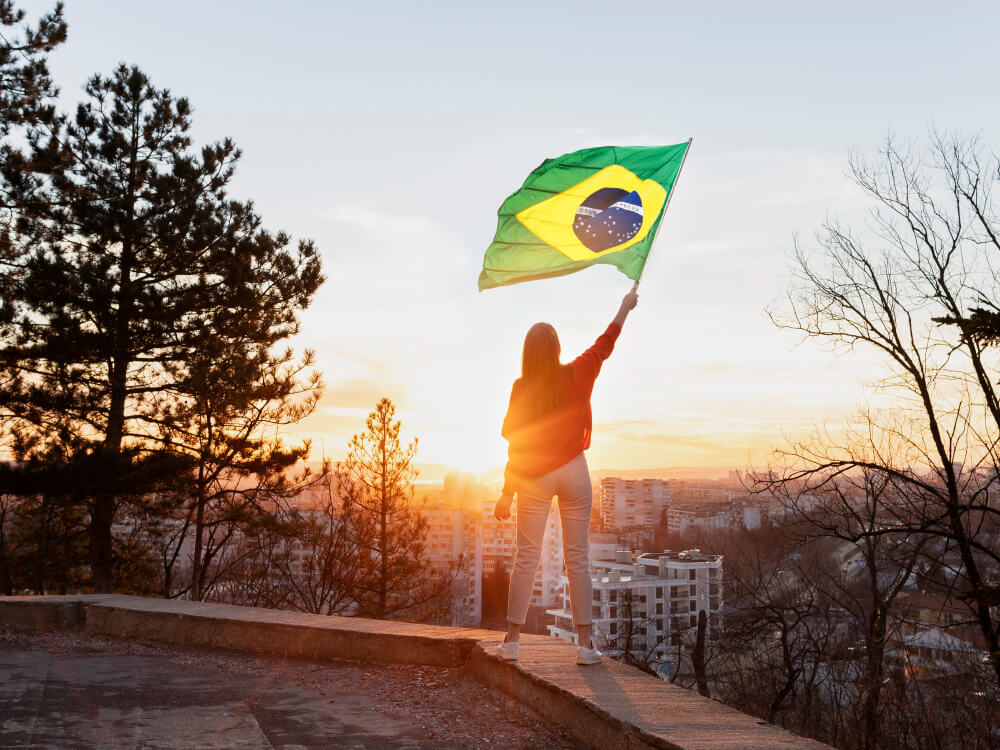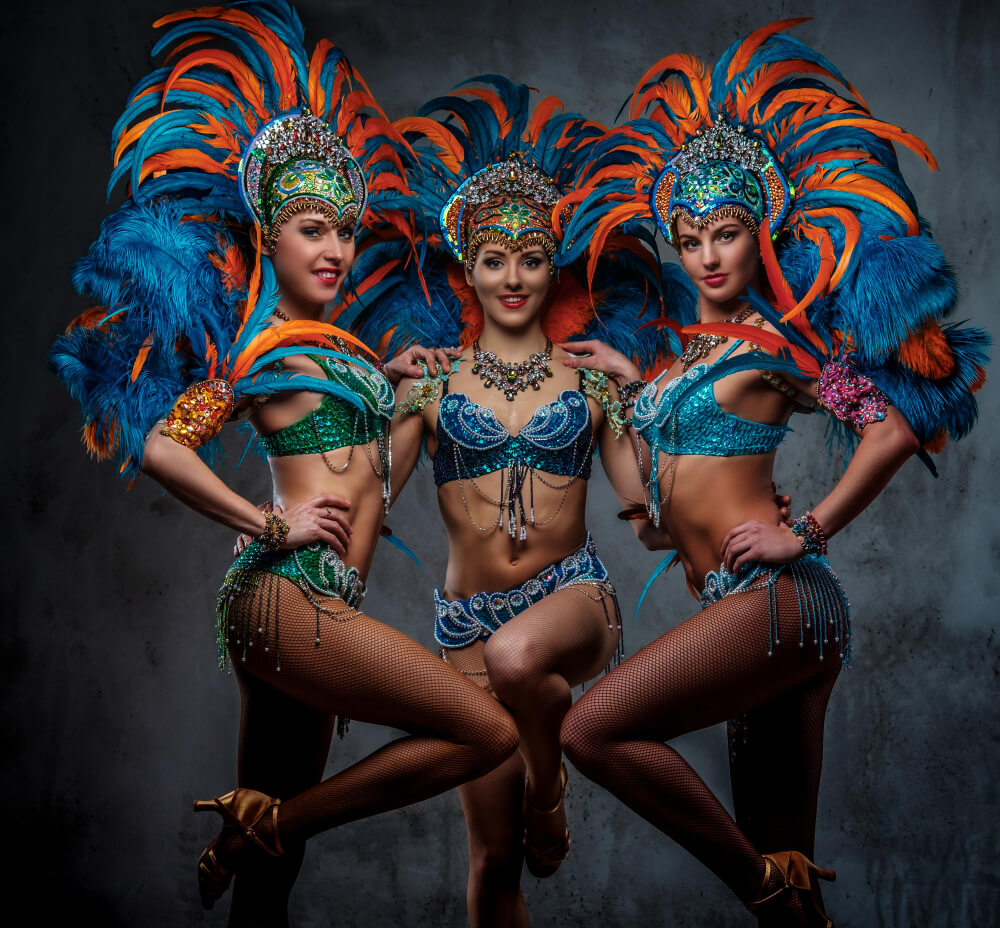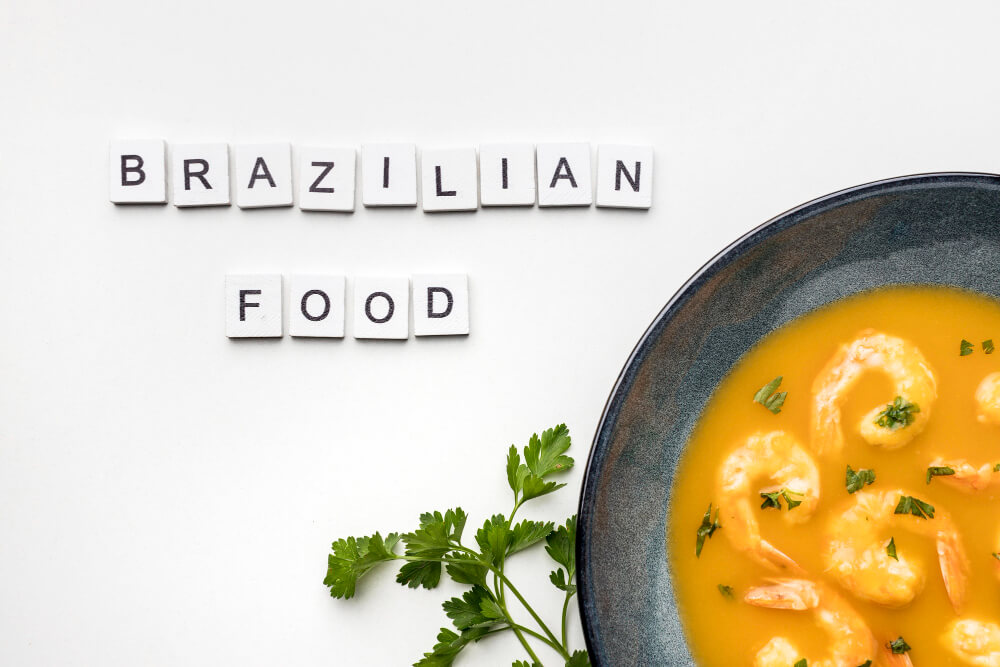Exploring Brazil’s Rich Cultural Tapestry: A Journey Through Music, Dance, and History

Hey there, culture enthusiasts and curious travellers! Ready to embark on a vibrant journey through Brazil’s incredible world of music, dance, and history? Buckle up, because we’re about to dive deep into the heart and soul of this diverse and captivating country. Our exploration of Brazilian Culture Music Dance, will take you on an unforgettable adventure through the rhythms, movements, and traditions that make Brazil truly unique.
Whether you’re planning a trip or just daydreaming about far-off places, this guide will give you a taste of what makes Brazilian culture so unique and irresistible.
Why Brazilian Culture Captivates the World
Brazil isn’t just a country; it’s a kaleidoscope of experiences, a melting pot of traditions, and a rhythm that pulses through every street and hillside.
But what is it about Brazilian culture that draws people in from all corners of the globe? Let’s break it down:
- Diversity: Brazil is huge, and each region has its own distinct flavour. From the Amazon rainforest to the beaches of Rio, from the cowboy country of the south to the Afro-Brazilian northeast, every area offers something unique.
- Passion: Brazilians put their heart and soul into everything they do, whether it’s playing football, dancing samba, or celebrating Carnival.
- Warmth: The famous Brazilian hospitality isn’t just a stereotype. People here genuinely love to welcome visitors and share their culture.
- History: Brazil’s past is complex and fascinating, blending indigenous, African, European, and Asian influences into something entirely new.
- Innovation: While respecting traditions, Brazilians are always creating something new, especially in music, art, and cuisine.
Now, let’s dive into the specifics of what makes Brazilian culture tick, starting with its world-renowned music scene.
Music That Moves You: Samba, Bossa Nova, and Beyond
Brazilian music isn’t just sound; it’s the country’s heartbeat. Each style tells a story of its origins and the people who created it.
Let’s explore some of the most iconic genres:
Samba: The Soul of Brazil
Samba is more than just music; it’s a cultural phenomenon. Born in the favelas of Rio de Janeiro, samba emerged from the African rhythms brought by enslaved people, mixed with European influences.
- Origins: Samba developed in the early 20th century, gaining popularity in the 1920s and 1930s.
- Characteristics: Syncopated rhythm, call and response patterns, and often accompanied by cavaquinho (a small guitar) and tamborim (a small drum).
- Famous artists: Cartola, Noel Rosa, Clara Nunes, and more recently, Seu Jorge.
When you hear samba, you’re listening to the sound of Brazilian joy and resilience. It’s the soundtrack of Carnival, but you’ll hear it year-round in bars, clubs, and street parties called “rodas de samba.”
Bossa Nova: Cool and Sophisticated
If samba is the heartbeat of Brazil, bossa nova is its gentle sigh. This cool, jazzy style emerged in the late 1950s and quickly became a global sensation.
- Origins: Developed by middle-class musicians in Rio’s Copacabana and Ipanema neighbourhoods.
- Characteristics: Soft, syncopated guitar rhythms, subtle percussion, and quiet, intimate vocals.
- Famous artists: João Gilberto, Antonio Carlos Jobim, Astrud Gilberto.
The song “The Girl from Ipanema” introduced bossa nova to the world, and it’s been captivating listeners ever since. It’s perfect for lazy afternoons on the beach or romantic evenings under the stars.
Forró: The Sound of Northeastern Brazil
Head to the northeast of Brazil, and you’ll hear a different beat. Forró is the lively, accordion-driven music that gets everyone on their feet.
- Origins: Developed in the rural northeast, possibly derived from the English phrase “for all” (as in, a party for all).
- Characteristics: Accordion, zabumba drum, and triangle, with lyrics often telling stories of rural life.
- Famosos artistas: Luiz Gonzaga (the “King of Baião”), Dominguinhos, Elba Ramalho.
Forró parties are a must-experience if you visit cities like Recife or Fortaleza. The energy is infectious, and even if you don’t know the steps, locals will be happy to teach you!
MPB (Música Popular Brasileira): The Sound of Change
MPB emerged in the 1960s as a sophisticated, often politically charged genre that blended various Brazilian styles with international influences.
- Origins: Developed during Brazil’s military dictatorship as a form of artistic resistance.
- Characteristics: Varied, but often featuring complex harmonies and thoughtful, poetic lyrics.
- Famous artists: Chico Buarque, Caetano Veloso, Gal Costa, Elis Regina.
Funk Carioca: The Sound of Rio’s Favelas
A more recent addition to Brazil’s musical landscape, funk carioca (or baile funk) emerged from Rio’s favelas in the 1980s.
- Origins: Inspired by Miami bass and African-American funk, adapted to local tastes.
- Characteristics: Heavy beats, repetitive lyrics, often dealing with life in the favelas.
- Famous artists: MC Marcinho, Anitta, Ludmilla.
While controversial due to some explicit lyrics, funk carioca has become a major part of Brazilian pop culture and is increasingly gaining international attention.
Dance Like Nobody’s Watching (Or Like Everybody Is!)
In Brazil, music and dance are inseparable. Each musical style has its own dance, and learning these dances is key to fully experiencing Brazilian culture.
Let’s explore some of the most popular styles:
Samba: More Than Just Carnival
While samba is famous for the elaborate routines of Carnival parades, there are many styles of samba dance:
- Samba no pé: The solo style you see at Carnival, characterised by quick feet movements.
- Samba de Gafieira: A partner dance that’s elegant and sensual.
- Samba Pagode: A more relaxed style often danced at informal gatherings.
Learning samba can be challenging, but it’s incredibly rewarding. Many dance schools in Rio offer classes for beginners.
Capoeira: Dance, Martial Art, or Both?
Capoeira is a unique Afro-Brazilian art form that combines elements of dance, acrobatics, and martial arts.
- Origins: Developed by enslaved Africans in Brazil, possibly as a way to disguise fighting practice as dance.
- Characteristics: Fluid, acrobatic movements, often performed to the sound of berimbau (a musical bow).
- Where to experience it: Salvador, Bahia is the heart of capoeira, but you can find schools and performances throughout Brazil.
Watching a capoeira roda (circle) is mesmerising, and participating is even better. Many schools offer classes for beginners, and it’s a great way to get fit while immersing yourself in Brazilian culture.
Forró: Dancing Cheek to Cheek
Forró isn’t just music; it’s also a partner dance that’s incredibly popular in northeastern Brazil.
- Basic steps: A simple two-step that’s easy to learn but takes time to master.
- Variations: Forró pé-de-serra (traditional), forró universitário (a more acrobatic style popular with younger dancers).
- Where to learn: Forró parties (called forrozeiros) often offer beginner lessons before the main dance starts.
Don’t be shy about asking someone to dance at a forró party. Brazilians are generally happy to teach newcomers the basic steps.
Axé: The Energy of Bahia
Axé is both a music genre and a dance style that originated in Salvador, Bahia.
It’s known for its high energy and African-influenced movements.
- Characteristics: Upbeat rhythms, call-and-response lyrics, and energetic dance moves.
- Famous songs: “Dancando” by Ivete Sangalo, “Requebra” by Daniela Mercury.
- Where to experience it: Salvador’s Carnival is the ultimate place to dance axé, but you’ll find it in clubs and parties throughout Brazil.
Axé dance moves often tell a story or have a specific meaning. Learning these can give you insight into Bahian culture and history.
Digging into Brazil’s Rich History
Brazil’s history is a complex tapestry woven from many threads. Understanding this history is key to appreciating the depth of Brazilian culture.
Let’s explore some key periods and their lasting impacts:
Pre-Columbian Era: The First Brazilians
Before Portuguese colonisation, Brazil was home to hundreds of indigenous tribes, each with their own languages and cultures.
- Major groups: Tupi, Guarani, Arawak, and many others.
- Legacy: Indigenous influences can be seen in Brazilian Portuguese, cuisine, and traditional medicine.
- Sites to visit: The Amazon region and Xingu Indigenous Park in Mato Grosso.
Many indigenous communities still maintain their traditional ways of life, though they face numerous challenges.
Visiting these communities (with respect and through proper channels) can provide incredible insights into Brazil’s original cultures.
Colonial Period: The Portuguese Arrival
Portugal’s colonisation of Brazil began in 1500 and profoundly shaped the country’s development.
- Key events: Establishment of sugar plantations, gold rush in Minas Gerais.
- Impact: Introduction of African slaves, spread of Catholicism, development of a plantation economy.
- Sites to visit: Historic centre of Salvador, gold mining towns of Minas Gerais like Ouro Preto.
The colonial period left an indelible mark on Brazilian society, from its language to its social structures. Many of Brazil’s most beautiful historic sites date from this era.
Imperial Brazil: A New Nation
Brazil gained independence from Portugal in 1822 and became an empire under Pedro I and later Pedro II.
- Key events: Abolition of slavery (1888), patronage of the arts and sciences.
- Impact: Development of a distinctly Brazilian national identity.
- Sites to visit: Imperial Museum in Petrópolis, Quinta da Boa Vista in Rio de Janeiro.
The imperial period saw Brazil establish itself on the world stage and begin to develop its unique cultural blend.
Modern Brazil: Challenges and Triumphs
Since becoming a republic in 1889, Brazil has experienced periods of dictatorship, democratisation, economic booms and busts, and social change.
- Key events: Getúlio Vargas era, military dictatorship (1964-1985), return to democracy.
- Impact: Rapid urbanisation, industrial development, ongoing struggles for social equality.
- Sites to visit: Memorial da Resistência em São Paulo, Museu da República no Rio de Janeiro.
Understanding modern Brazilian history helps put current events and social issues into context.
Bringing It All Together: Cultural Festivals
Brazilian festivals are where history, music, dance, and spirituality all come together in jubilant celebration. Here are some you shouldn’t miss:
Carnival: The Greatest Show on Earth
Carnival isn’t just a party; it’s a national obsession. While Rio’s Carnival is the most famous, every region has its own traditions.
- Rio de Janeiro: Spectacular samba school parades, street parties (blocos).
- Salvador: Trio elétricos (music trucks) lead massive street parties.
- Recife/Olinda: Frevo music and dance, giant puppet parades.
Tip: Book accommodations well in advance for Carnival, as prices skyrocket and availability becomes scarce.

Festa Junina: Celebrating Rural Traditions
In June, Brazil celebrates its countryside roots with festas juninas, featuring square dancing, bonfires, and traditional food and drink.
- Origins: Catholic feast days (St. Anthony, St. John, St. Peter) mixed with indigenous and African traditions.
- What to expect: Colourful decorations, quadrilha dancing, games, and lots of corn-based treats.
- Where to go: While celebrated nationwide, the northeast (especially Campina Grande) has some of the biggest festivals.
Festa junina is a great way to experience Brazil’s rural culture, even in big cities.
Bumba Meu Boi: Folclore Comes to Life
This festival, popular in the northeast (especially Maranhão), centres around a folk tale involving the death and resurrection of a prized bull.
- What to expect: Elaborate costumes, music, dance, and theatrical performances.
- When: June to August, with the main celebrations around São João (St. John’s Day, June 24).
- Cultural significance: Blends indigenous, African, and European elements in a uniquely Brazilian celebration.
Bumba Meu Boi is less known internationally than Carnival, but it’s a fascinating window into Brazil’s folkloric traditions.
Practical Tips for Your Brazilian Culture Music Dance
- Learn some Portuguese: Even basic phrases will help you connect with locals and show respect for the culture.
- Be open to new experiences: Try unfamiliar foods, join in dances even if you don’t know the steps, and say yes to invitations from locals (while always prioritising your safety, of course).
- Respect local customs: Ask before taking photos, especially in religious or indigenous settings. Dress modestly when visiting churches.
- Stay safe: Like any country, Brazil has its safety concerns. Stay aware of your surroundings, especially in big cities, and ask locals for advice on areas to avoid.
- Embrace “Brazilian time”: Things often run a bit late in Brazil. Relax and go with the flow.
- Support local artisans: Look for handicrafts and artwork as souvenirs. They make great gifts and support traditional crafts.
- Try regional cuisines: Each area of Brazil has its specialties. Don’t miss feijoada in Rio, acarajé in Bahia, or churrasco in the south.
- Attend local events: Look for cultural centres, museums, and theatres. Many offer free or low-cost performances and exhibitions.
Conclusion
Brazil’s culture is so rich and varied that this guide only scratches the surface. Every visit brings new discoveries, whether it’s a hidden samba club in Rio, a traditional indigenous craft in the Amazon, or a cutting-edge art gallery in São Paulo.
Remember, the key to truly experiencing Brazilian Culture Music Dance is to dive in with an open heart and mind. Brazilians love to share their culture with visitors, so don’t be afraid to ask questions, try new things, and make connections.
What aspect of Brazilian culture intrigues you the most? Have you experienced it yourself, or are you planning a trip? Drop a comment below and let’s chat! And if you found this guide helpful, why not share it with your travel-loving friends?
Keep exploring, and stay tuned for more updates on Brazilian cultural experiences. There’s always something new to discover in this amazing country!
Frequently Asked Questions
What are some of the most popular music genres in Brazil?
Some of the most popular and influential Brazilian music genres include:
- Samba – The iconic Brazilian rhythm that originated in Rio de Janeiro, known for its lively beat and association with Carnival.
- Bossa nova – A softer, jazzier offshoot of samba that gained worldwide popularity in the 1950s-60s.
- Forró – A traditional genre from northeastern Brazil featuring accordion, triangle, and zabumba drum.
- MPB (Música Popular Brasileira) – A broad category of Brazilian pop music that fuses various styles.
- Funk carioca – An urban dance music style from Rio’s favelas.
What is the significance of Carnival in Brazilian culture?
Carnival is Brazil’s most famous festival and a major cultural event. Key aspects include:
- It’s a massive celebration held before Lent, featuring parades, music, and dancing in the streets.
- Samba schools compete with elaborate floats and costumes in Rio’s Sambadrome.
- It reflects Brazil’s diverse cultural influences, blending European, African, and indigenous traditions.
- Carnival celebrations vary by region, with unique styles in cities like Salvador and Recife.
How has African heritage influenced Brazilian Culture Music Dance?
African influences are deeply embedded in Brazilian culture, especially in music and dance:
- Many Brazilian rhythms like samba have roots in African musical traditions brought by enslaved people.
- African-derived religious practices like Candomblé influenced musical styles and instruments.
- Dance forms like capoeira blend martial arts, dance, and music, originating from African slaves.
- Percussion instruments central to Brazilian music often have African origins.
What are some important historical sites to visit in Brazil?
Brazil has numerous significant historical sites, including:
- The historic centre of Salvador, with its colonial architecture and churches.
- The gold mining towns of Minas Gerais, like Ouro Preto, with their Baroque buildings.
- The modernist capital city of Brasília, designed by architect Oscar Niemeyer.
- The Jesuit Missions of the Guaranis, ruins of 17th-18th century settlements.
- The São Paulo Art Museum, housing an important collection of Brazilian and international art.
How can visitors experience traditional Brazilian Culture Music Dance?
Visitors can immerse themselves in Brazilian music and dance culture through:
- Attending live music performances at bars, clubs, and cultural centres.
- Taking samba, forró, or capoeira classes offered in many cities.
- Visiting a samba school in Rio to see rehearsals or workshops.
- Exploring regional music scenes, like axé in Salvador or frevo in Recife.
- Attending festivals like Carnival or the June Festivals (Festas Juninas) that showcase traditional music and dance.



35 comments